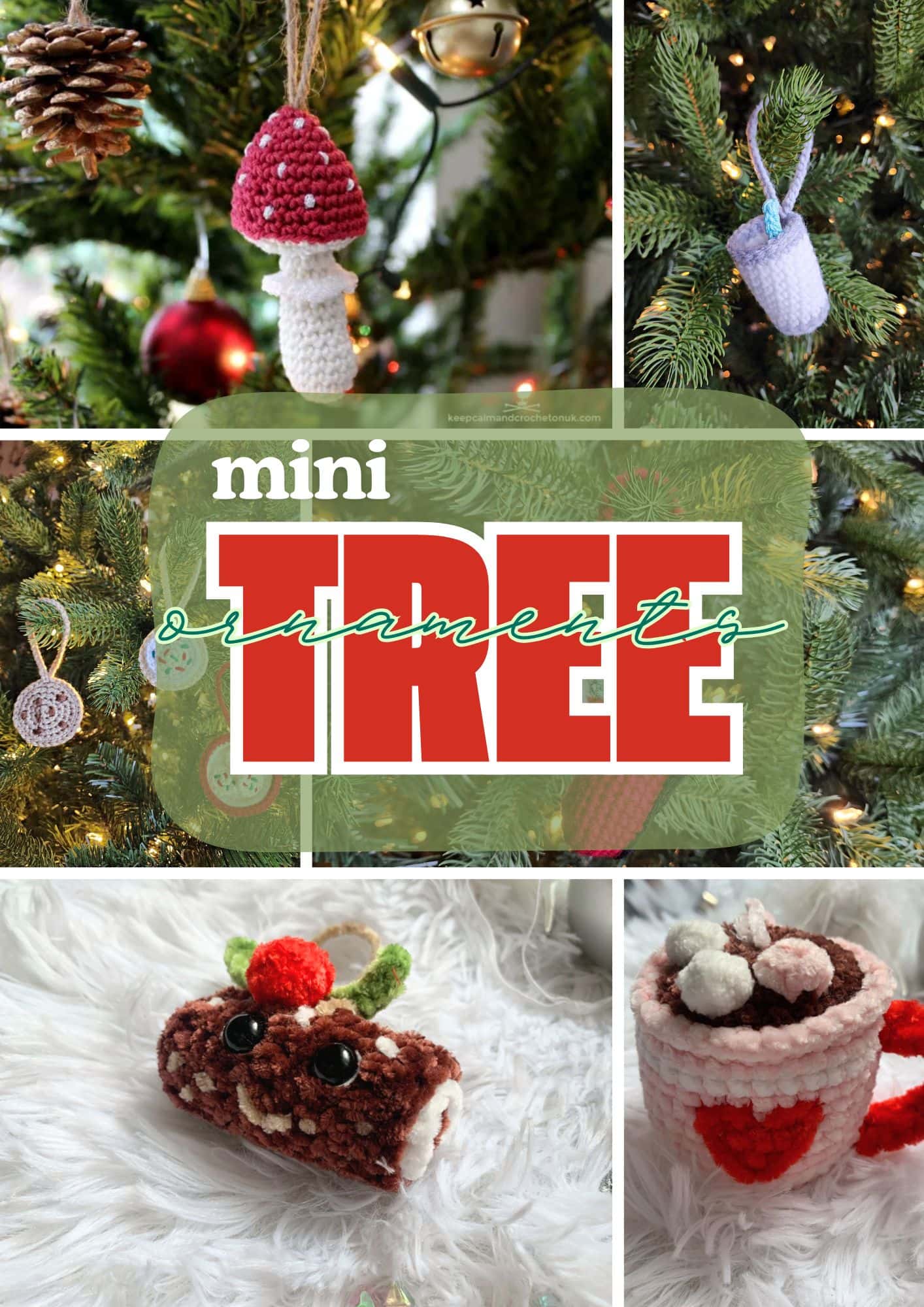Want To Be A Knit Or Crochet Contractor Or Tester?
Do you love to knit or crochet? Or, do you fill your spare time with crafting just because you love to make things? Do you need something to keep your hands busy while you watch tv? If you answered YES to any of these questions, then maybe you’re the perfect person to be a knit or crochet pattern tester or contractor. Let’s take some time to really understand what pattern testing and knit or crochet contracting means.

- Sandwallen Crochet Blanket by Marly Bird
- Go to Baby Shower Blanket by Marly Bird
- Sharon Hat & Mittens by Marly Bird
- Shannon Hat & Mittens by Marly Bird
- Birch Headband by White Owl Crochet
- Ava Cardigan by Herr Stitches
- Wildwood Pullover by Baahumble
- Heart & Sole Hat by Salena Baca
- Lined Granny Earwarmer by Marly Bird
My Intro Into Pattern Testing And Contracting
Hey friends, Cryssi here! You may know me as Marly’s Executive Assistant or the Joy Creator, but did you know it all started with an introduction from Salena Baca? I started as a pattern tester for Salena in 2015, and boy, have things evolved over the years!
From tester, contractor, and tech editor, to designer, I’ve run the gamut of things that the fiber industry has to offer by way of careers. You may have even caught me on my soapbox during one of Marly’s lives. Pattern testers and contractors are an integral part of the pattern design process, but what do those roles really mean, what is expected of you, and how do you know if it is something you can do?
(NOTE: These opinions are my own and may vary from designer to designer, but are my experience as a tester and contractor for many designers in the industry. The photos in this post are tests/contract samples I’ve made over the years.)
Don’t Expect Perfection!
I’ll never forget the first time I tested a pattern. I had been following Salena Baca for a few years and always liked her work, and I saw her post a call about needing crochet pattern testers. I wasn’t even sure what it meant, but she posted a detailed explanation of what she was looking for and I thought, I think I can do that, so I volunteered. I’ll never forget the first hat I tested – it turned out ROUGH.
The crown was pointed and wonky and did not look good. I was so upset and confused. I had followed the pattern; what the heck went wrong?! So, I went to Salena and showed her my hat, and I told her I’d followed the crown (as written) but that it looked like a cone rather than a rounded crown. I was mortified!
Salena came back and said that it was actually an error in the pattern, and of all the testers, I was the only one who caught that. (See wonky crown pictured below.) Note: The pattern has been fixed. Your crown won’t be wonky. LOL!
I needed This confidence boost to branch out and keep testing for others. The more you learn about knitting and crochet, the more confident you become with your skills. As you become more confident, you may consider what avenues to use your skills or even make money!
Let’s chat through some of those options…
Be sure to read to the end for my biggest tip for being a knit or crochet contractor.
First…Let’s Talk Pattern Testers
What is a pattern tester? A pattern tester does exactly what it sounds like….you take the pattern for a test drive! It’s such an important part of the design process!
Why?
Because designers often make something, then go back and write the pattern for that item. And in doing this, sometimes, things can get lost in translation.
A pattern tester creates a sample from the pattern and provides notes and feedback to the designer on anything confusing, doesn’t work, or is incorrect. Pattern testers are typically unpaid volunteers who use their own yarn to make the project.
And if you’re going to give it a try, you MUST be honest about your skill level. If you are a brand-spanking new beginner, say so!
Own it!
Beginners really do make some of the best testers because they have to read everything so carefully! A more seasoned knitter or crocheter may intuitively fill in the blanks when something is missing.
A pattern tester needs to be honest about their time and ability to complete the test in the time allotted. When a tester volunteers and bails, that’s one less set of eyes on a pattern (which has a big impact if something has multiple sizes). When a tester doesn’t finish the item on time, the designer must push back their timeline or move forward without the feedback.
Both situations, quite frankly, stink.
If you are going to volunteer, be sure that you have the time and ability to complete the task. Life happens, and everyone understands that, but it should be few and far between. But let’s talk about that for a minute…
How To Back Out Of A Test Gracefully
Listen, sometimes, it’s going to happen. You either overestimated your ability, underestimated the timeline, or got completely sidelined by LIFE. Now, you must tell a designer who selected you (sometimes from dozens of applicants) that you can’t do what you said you would.
Communication is KEY!
The most important thing you MUST do is let them know as soon as you realize it. Avoidance is not a solution, sweet friends! You may be embarrassed, but you don’t need to be! You are not the first, and you won’t be the last. It is a part of the industry! But don’t be the person who waits until the last minute or never responds to messages.
You can help support the designer in other ways, like purchasing the pattern once it is released or promoting it on social media.
We LOVE when our friends promote with us on social media!!!
Now…What Is A Contractor?
A contractor is hired (for pay) to make a sample item of a specific size from a pattern that has typically already been tested.
Skills Needed to be a Knit or Crochet Contractor:
Do you need to be the most experienced knitter or crocheter to be able to be a contractor? The answer is no, but you should be beyond the beginner stages and have tried a variety of projects. When a designer is looking for new contractors, they often ask to see your Ravelry page.
Your Ravelry page should be a collection of everything (or almost everything) you have worked on. This is like your portfolio as a tester & contractor! Designers can use this to see the quality of your work.
Not only do you want your items to look amazing, but you should also work on your photography skills to highlight what designers can’t see in person.
To work as a knit or crochet contractor, you will need the following:
- To be organized
- Self-motivated
- Work well under pressure
- A strong communicator
- Have strong time management skills
- Be detail-oriented… to name a few.
As we continue, you will see why these skills are so important.
Typical Payment Options
Typically, designers will pay you one of three ways.
- Some offer an agreed sum for the project. Each designer will have an amount paid for the design, and then they will budget an amount for the sample to be made. If the designer pays you with a lump sum, they will tell you that amount before you get started, and you can either accept the job or turn it down. You should always consider the amount of time you have available to make the project, the time frame to complete the project, and the complexity of the project before you agree to take on a job.
- Another other option for payment is to pay per yard. I have heard that designers will pay anywhere from $.15 to $.18 per yard that is used to make the project. Please note that each designer will approach this differently, and each project will be different. Be sure to weigh the pros and cons before taking on a job.
- Maybe the designer will offer to pay you with the finished sample. Once they have taken the photos that they need of the sample, they may offer to send it back to you as payment. Again, you must decide if you love the project enough to keep it or would prefer to be compensated monetarily.
Contractor Deadlines
Often, you have a very short turnaround time. This could mean two weeks to complete an adult sweater. Please remember, though, most times you will only need to make a size small, depending on the size of the model for the project.
You’ll need to stay on task since there’s such a short window. I like to plan out what I need to accomplish each day. If I can get more than that done, great, but I know my daily minimum. This helps keep me from feeling overwhelmed at the end of the project.
Remember you must include the time it takes to finish the project. This includes joining, weaving in ends, and blocking. Blocking can take some time if the item needs to be wet-blocked and dried.
You will also need to be able to communicate EXTREMELY well.
Throughout the project, you should contact the designer in whichever method they prefer. I find it best to update them on my status so they know how things are going. Should I find something in the pattern that doesn’t make sense I always reach out immediately to get confirmation before continuing.
DON’T ask for an extension unless ABSOLUTELY necessary. If the designer is the cause of the delay, they should offer you an extension. You may not be asked to complete another project if you can’t meet the deadlines.
Remember that these deadlines are typically orchestrated by the magazine, publisher, or yarn company that the designer is working with. In most cases, but not all, the designer does not typically select deadlines.
Contractor Or Tester?
Becoming a contractor for a designer is not like becoming a tester. When you are a contractor, you will need to have all of the hooks that are used in the project, but the designer will send you the pattern and the yarn. Designers typically also pay for the shipping of the finished project to wherever they need it to go.
When you are a tester, you must purchase the yarn you would like to use for the project. With testing, most designers will require that you test a pattern every few months.
When you are a contractor, there are times when you will have a lot of work and others where it will be months before there is another project.
Be patient with getting contractor work. Designers can’t afford to have samples made for every design that they do. Some designers thrive on making the sample themselves, and others prefer to write the pattern and have someone else make it so they can work on dreaming up their next project.
Other Things to Note…
Most designers will expect that you live in a smoke-free home. They don’t want the sample to smell of smoke when it is being sent off to a magazine or if they are publishing a book. Sometimes, the project will go directly to the magazine or publisher for photos rather than going back to the designer one last time.
Designers may ask you if you have pets. This is not always a deal breaker, but they may be interested to know what types of pets you have and how many. Designers may use this information in deciding which projects to send to you. If you have dogs, sending you a project requiring dark-colored yarn might not be best.
Prepare to be on a one-strike policy. If you miss a deadline or have poor quality work, you may not be asked to work for that designer again.
Include the time to finish the project in your estimates. You don’t want to hand over a project that is not finished correctly.
Make sure you read my final note!
Final Note on Being a Knit or Crochet Contractor
The item that you make not only reflects you and your skills but also the designer you are working for. Designers work very hard to make a living, producing new patterns to keep everyone excited.
When they trust you to make a sample for them, they trust that you will put in the same time and energy, and LOVE that they would if they could make it themselves.
You get one chance to impress. Seize it!
Want Another Opinion?:
Head over to the CGOA website to read their post from 2014 about “a day in the life of a contract crocheter“.
Also on the Blog:
Categories: Crochet, Knitting, Tips, Tricks, Techniques for Knitting and Crochet














Hi Katelyn!
Thanks for this insight on being a knit or crochet contractor. I love knitting and crocheting and would love it if I could make some money with these skills! I am on Etsy but I’m not good at marketing…also, at this time it is required of me to work my part-time bookkeeping job to contribute to the family’s finances…but I would prefer knitting or crocheting to do this!!
Do you have any suggestions for locating designers in need of contract knitters and crocheters? Would you be willing to share that information, as well??
I appreciate your time in replying back, Katelyn.
Have a great week!
Best regards,
—
Pamela Watson,
Miss Pam’s Creations
Hi Pamela-I don’t have any great resources for finding work. Really for me it has come down to following my favorite designers and every now and then they will ask for help. Please also consider that sample knitting may not be a full time job. Finding sample work is hard and the pay is not always equal to the amount of time that it takes to do the projects.
Thanks for the information, Katelyn!
This is awesome information. I was unaware of putting pictures of all my work on Ravelry. I have never thought about putting those up. I have never had a need to really. Thank you for the education.
Mindy Blan
Hello Katelyn
Thank you for this information, I have crocheted and knit items but it hasn’t occurred to me to upload them to Ravelry. I thought it was a platform to just purchase and save patterns. If you don’t have pictures uploaded to Ravelry does that hinder the opportunity to be a contractor? I filled out the form Marly Bird had posted.
Thank you
Julia
Thank you for taking the time to explain the process of being a knit/crochet contractor! I’d love to do it, but I know my limits currently and my 5 year old takes up a lot of that time. Eventually I’ll be ready to become one either with helping Madly or Chandi ❤️ my best advice is for those thinking about doing contacting is to act like you’re on a deadline! Get really great at making something in 2 wks, including the dreaded weaving of ends and blocking, and then reach out to designers